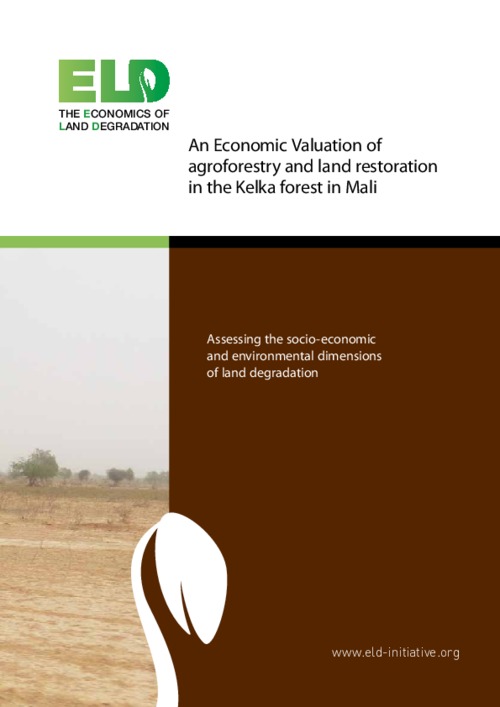Resource information
The Kelka forest in the Mopti region of Mali is important for the provision of ecosystem services like carbon sequestration and maintenance of the hydrological cycle. The Kelka forest area occupies more than 300, 000 hectares with 15
villages within and around its boundaries. The forest resources and soil fertility of the forest are in continuous decline due to a combination of climatic and human induced factors. For example, the availability of firewood has halved
over the past 15 years due to a lack of adequate forest and land management.Sustainable land management interventions
that can reverse the current trend of forest and land degradation are increasingly necessary, but large scale interventions need to be grounded in solid assessments of their potential economic and financial value to the local and the global society. To address this need, the paper presents an ex-ante cost benefit analysis of large-scale agroforestry and reforestation in
the Kelka forest to inform decision-makers about the value and importance of changing current land use practices. The economic valuation uses ‘productivity change’, ‘avoided cost’, ‘replacement cost’, and ‘market based’ valuation methods. The analysis is based on high-resolution remote sensing techniques, an explicit spatially distributed hydrological model, and a crop growth model,developed to assess the impact of land use change on firewood availability, soil moisture, carbon
sequestration, and nitrogen fixation. Using different discount rates, results indicate that the benefits of large-scale agroforestry and/or reforestation are significantly higher than the costs of implementing the restoration options
over a 25 year time horizon. Different options for incentivizing agroforestry and restoration of the Kelka forest are discussed.


